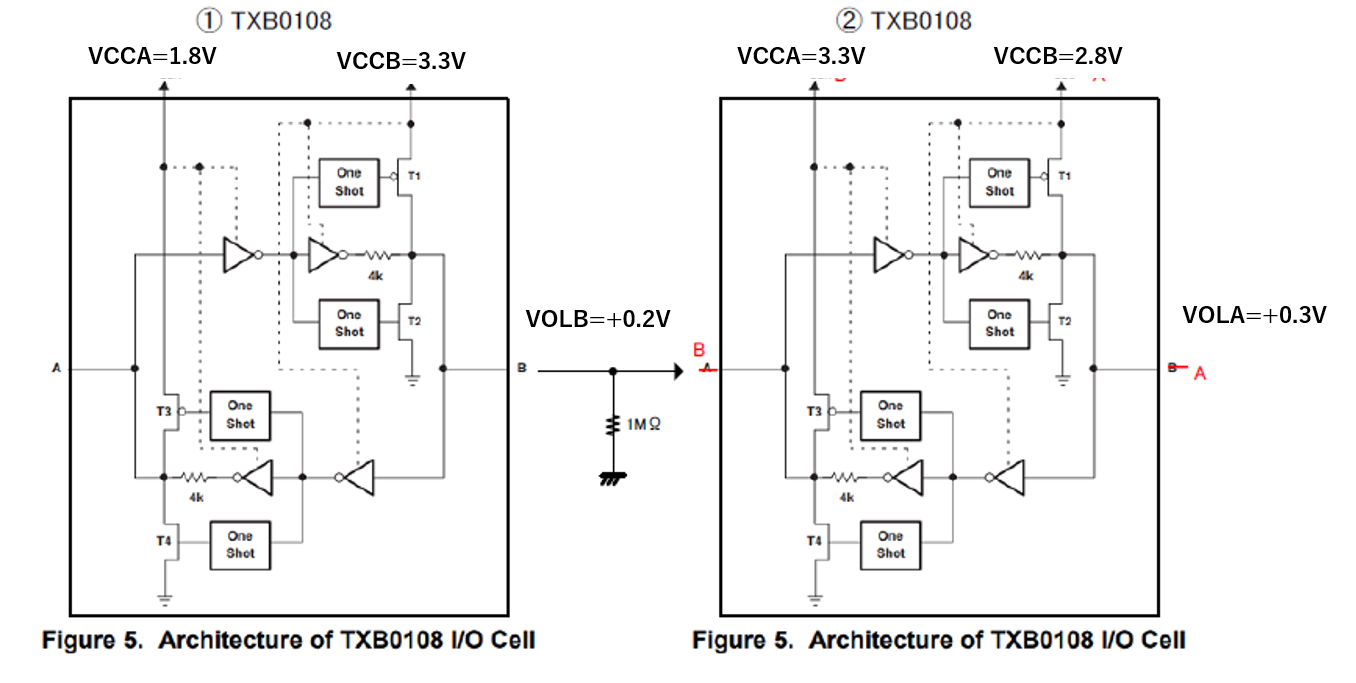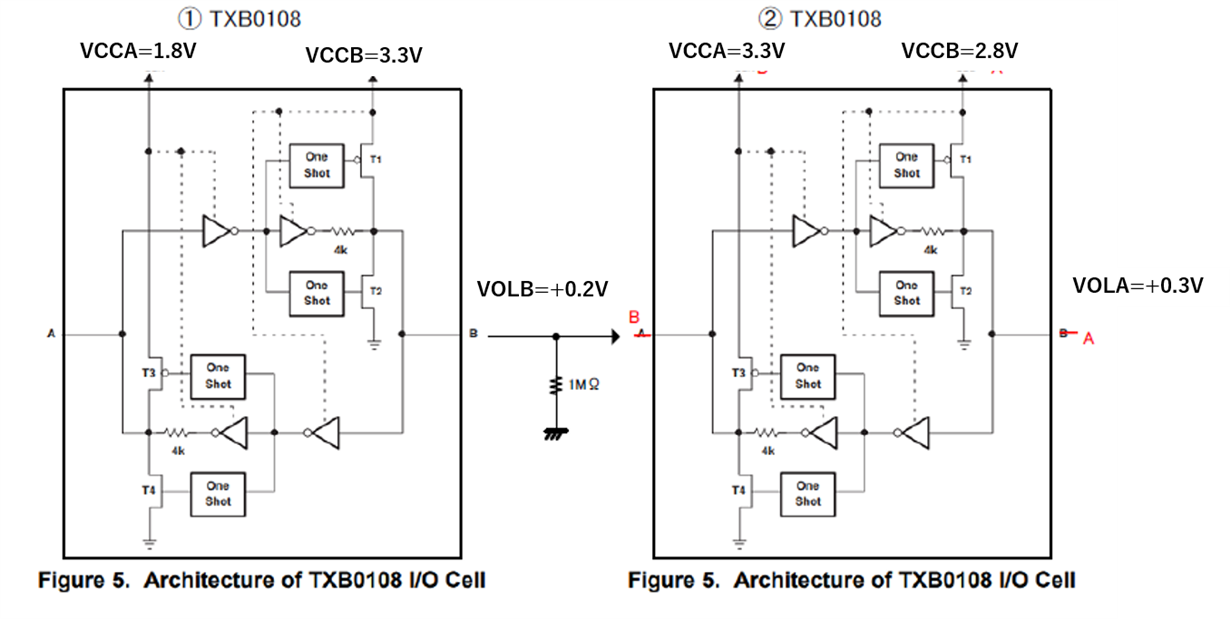Other Parts Discussed in Thread: SN74AXC8T245
Dear TI Team
I would like to ask about TXB0108.
Our customer is considering a circuit in which two TXB0108 are connected in series as described above.
When the output of the CPU connected to A on the device side of ① is set to Low, VOLB = +0.2V and VOLA = +0.3V in the above figure.
However, when the output of CPU was set to Low with the device of ② removed, VOLB=0V.
We would like to set VOLB=VOLA=0V due to the above circuit specifications.
I think that the value of VOLB became +0.2V and VOLA=0.3V due to the effect of the output current flowing through the 1MΩ pull-down resistor between the devices of ① and ②.
Although not shown in the data sheet, is it necessary to have a 1MΩ pull-down resistor between ① and ② for the above connection?
(By the way, the data sheet says that the pull-down resistor used outside the TXB0108 output must be 50 kΩ or more.)



